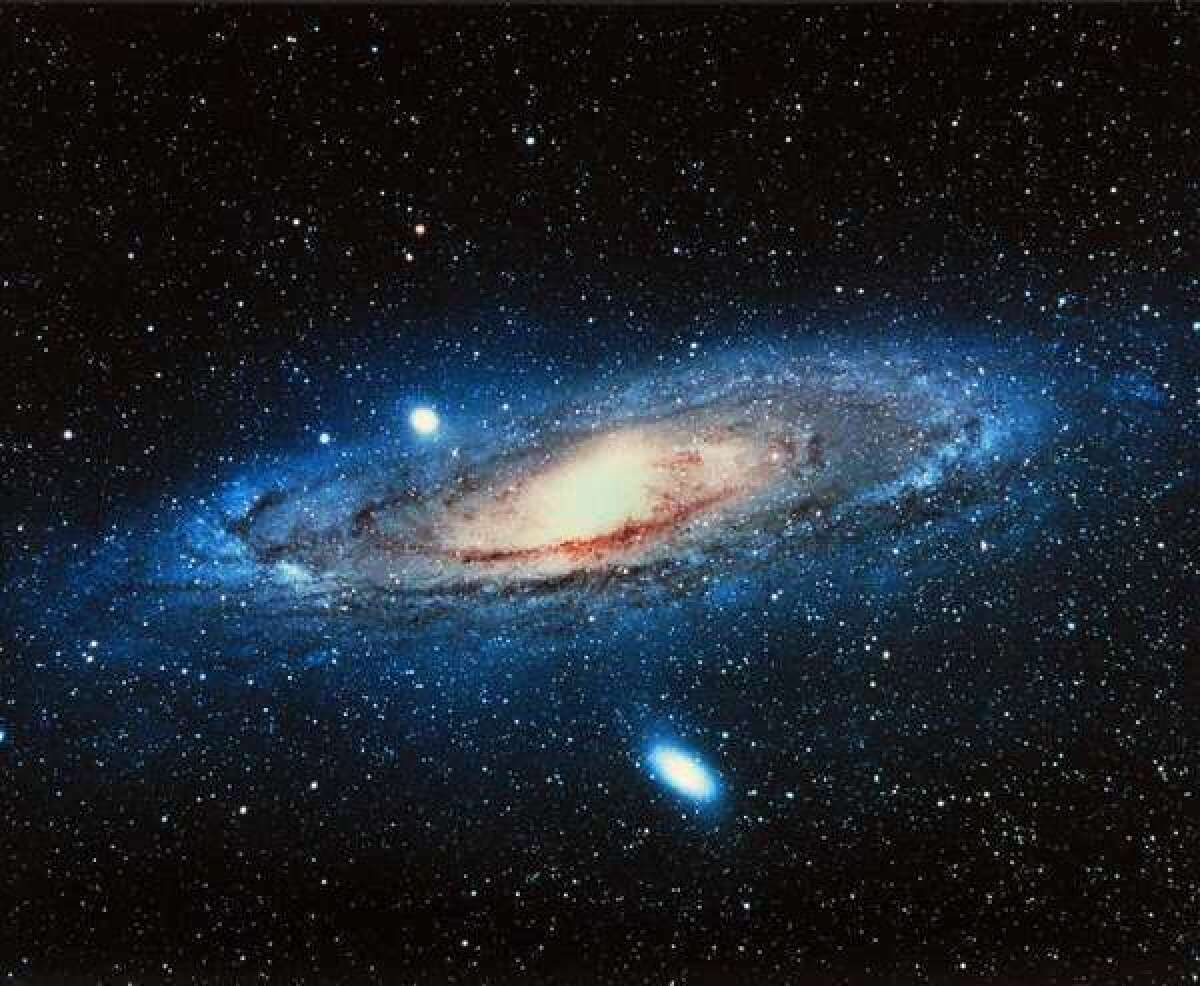Scientists detect a microquasar in nearby Andromeda galaxy

Astronomers said Wednesday that a burst of X-rays from the galaxy Andromeda appeared to have been created by a microquasar — a black hole gobbling up material from a companion star. The discovery could help scientists study the physics of the massive black holes at the centers of galaxies, they said.
Andromeda is about 2.5 million light years from Earth. The newly found microquasar, dubbed XMMU J004243.6+412519, is about the mass of 10 suns and was the first discovered outside of the Milky Way, the team said. The scientists initially detected it on Jan. 15, then continued watching it with several different telescopes that detect X-rays or radio waves. The microquasar’s location in Andromeda offered a clean look at their target because there isn’t much gas or dust obscuring the view in that direction.
Astronomers had seen similar flashes of X-ray emissions in nearby galaxies in the past but had not been sure whether those flashes came from small black holes — like those that create microquasars — or far more massive black holes like the ones at the centers of galaxies that create quasars. The pattern of emissions seen from XMMU J004243.6+412519 were like a microquasar’s, the scientists said, providing “the smoking gun, a dead giveaway that these are just normal, everyday black holes,” said International Centre for Radio Astronomy Research astronomer James Miller-Jones, a co-author of a study (subscription required) describing the results published online in the journal Nature, in a statement.
According to the researchers, the discovery offers hope that there are a lot more places astronomers can go to understand the physics of microquasars as well as quasars. Understanding why quasars behave as they do might offer clues about the earliest phases of the universe’s history, they said.
“This is, we think, the same mechanism at work in quasars at the cores of galaxies, where the black holes are millions of times more massive. However, in the smaller systems, things happen much more rapidly, giving us more data to help understand the physics at work,” said Matthew Middleton, lead author of the paper, in a statement. “Understanding how these things work is important, because we think quasars played a big role in redistributing matter and energy when the universe was very young.”
Middleton, of the University of Durham in England and the Astronomical Institute Anton Pannekoek in Amsterdam, said that it was difficult to study microquasars in the Milky Way because of the blurring effects of interstellar dust but that finding one in another galaxy suggests there are probably many more to be discovered, and many more for astronomers to study in the future.







